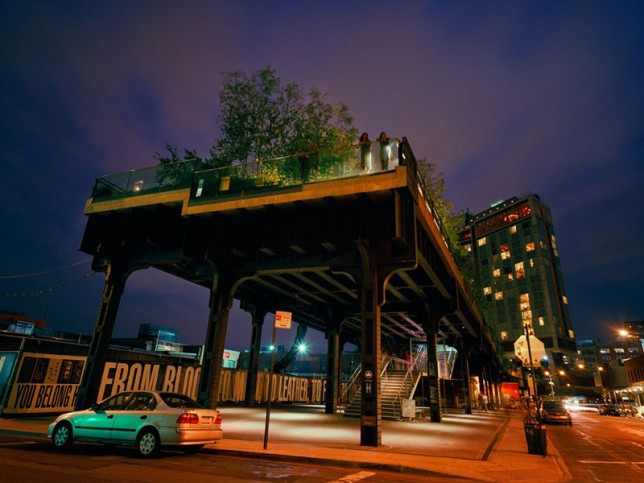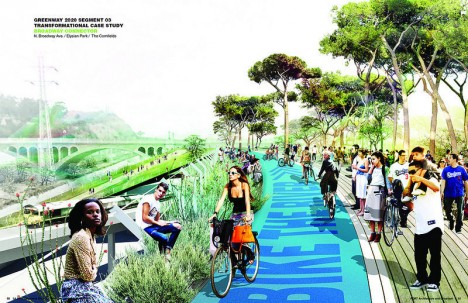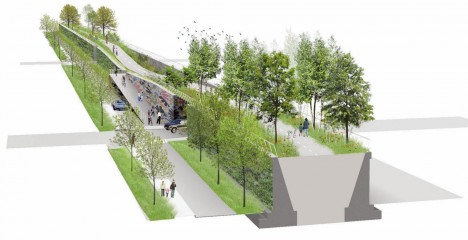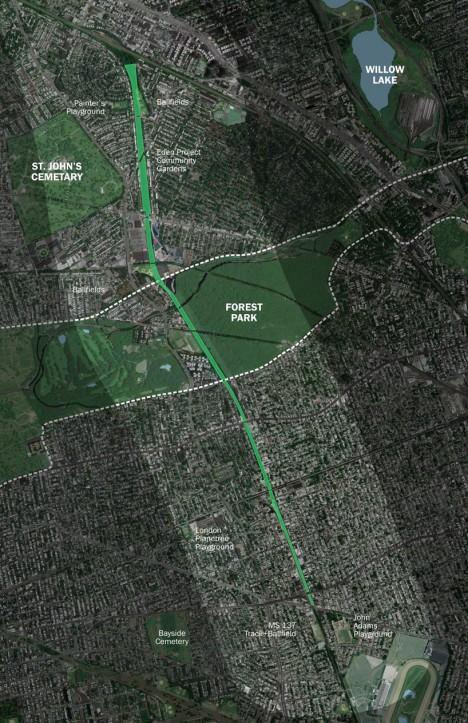Cities around the U.S. are taking notice of New York's highly popular High Line elevated park system.
Both Chicago and Los Angeles are currently working on High Line-like projects. These projects essentially equal elevated parks, usually built on or near abandoned railway tracks. To see what New York has been up to so far, click here.
See the complete story from weburbanist.com here. All renderings courtesy of weburbanist.
The L.A. River Greenway Project
L.A. is currently attempting to join 50 miles of walking and bike paths, some of which are still being created. Many paths already exist, but they force users to go through dangerous crossings and intersections. Eventually, the project is meant to incorporate public space, like yoga centers and bike-in movie theatres.
The Chicago 606 & Bloomingdale Trail Project
Centered around the Bloomingdale Trail, this multiple-mile long trail is already partway finished. The elevated path runs parallel to railroad tracks heading east and west. This project means revitalizing dilapidated train tracks and improving upon green space, and also connecting Lake Michigan with the downtown area.
QueensWay
This project takes us back to New York, where it is an attempt to turn over 3 miles of abandoned railway in Central Queens into a High Line Park.
Related Stories
| Sep 16, 2010
Gehry’s Santa Monica Place gets a wave of changes
Omniplan, in association with Jerde Partnership, created an updated design for Santa Monica Place, a shopping mall designed by Frank Gehry in 1980.
| Sep 16, 2010
Green recreation/wellness center targets physical, environmental health
The 151,000-sf recreation and wellness center at California State University’s Sacramento campus, called the WELL (for “wellness, education, leisure, lifestyle”), has a fitness center, café, indoor track, gymnasium, racquetball courts, educational and counseling space, the largest rock climbing wall in the CSU system.
| Sep 13, 2010
Community college police, parking structure targets LEED Platinum
The San Diego Community College District's $1.555 billion construction program continues with groundbreaking for a 6,000-sf police substation and an 828-space, four-story parking structure at San Diego Miramar College.
| Sep 13, 2010
Campus housing fosters community connection
A 600,000-sf complex on the University of Washington's Seattle campus will include four residence halls for 1,650 students and a 100-seat cafe, 8,000-sf grocery store, and conference center with 200-seat auditorium for both student and community use.
| Sep 13, 2010
Second Time Around
A Building Team preserves the historic facade of a Broadway theater en route to creating the first green playhouse on the Great White Way.
| Sep 13, 2010
Palos Community Hospital plans upgrades, expansion
A laboratory, pharmacy, critical care unit, perioperative services, and 192 new patient beds are part of Palos (Ill.) Community Hospital's 617,500-sf expansion and renovation.
| Sep 13, 2010
China's largest single-phase hospital planned for Shanghai
RTKL's Los Angles office is designing the Shanghai Changzheng New Pudong Hospital, which will be the largest new hospital built in China in a single phase.
| Sep 13, 2010
Richmond living/learning complex targets LEED Silver
The 162,000-sf living/learning complex includes a residence hall with 122 units for 459 students with a study center on the ground level and communal and study spaces on each of the residential levels. The project is targeting LEED Silver.


















